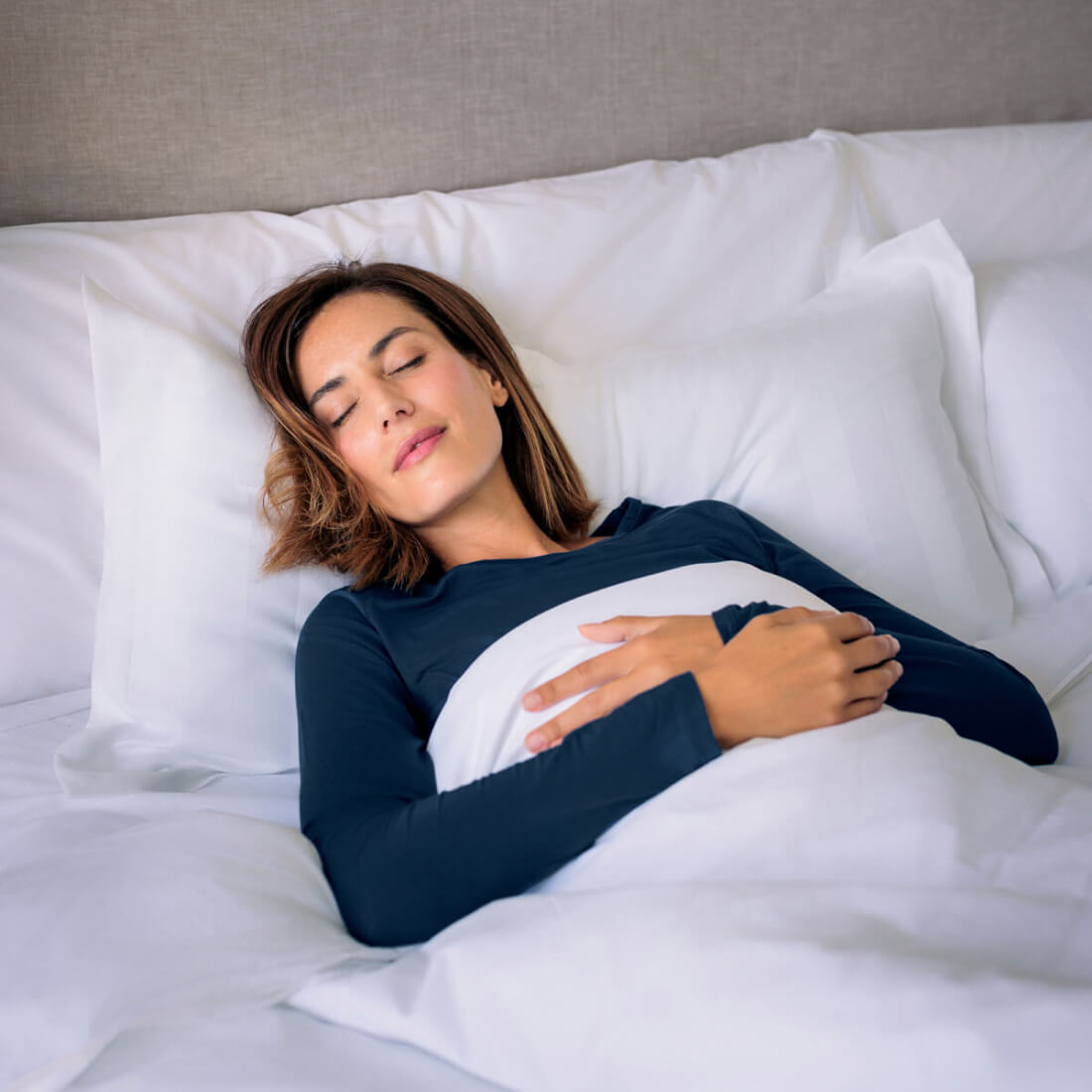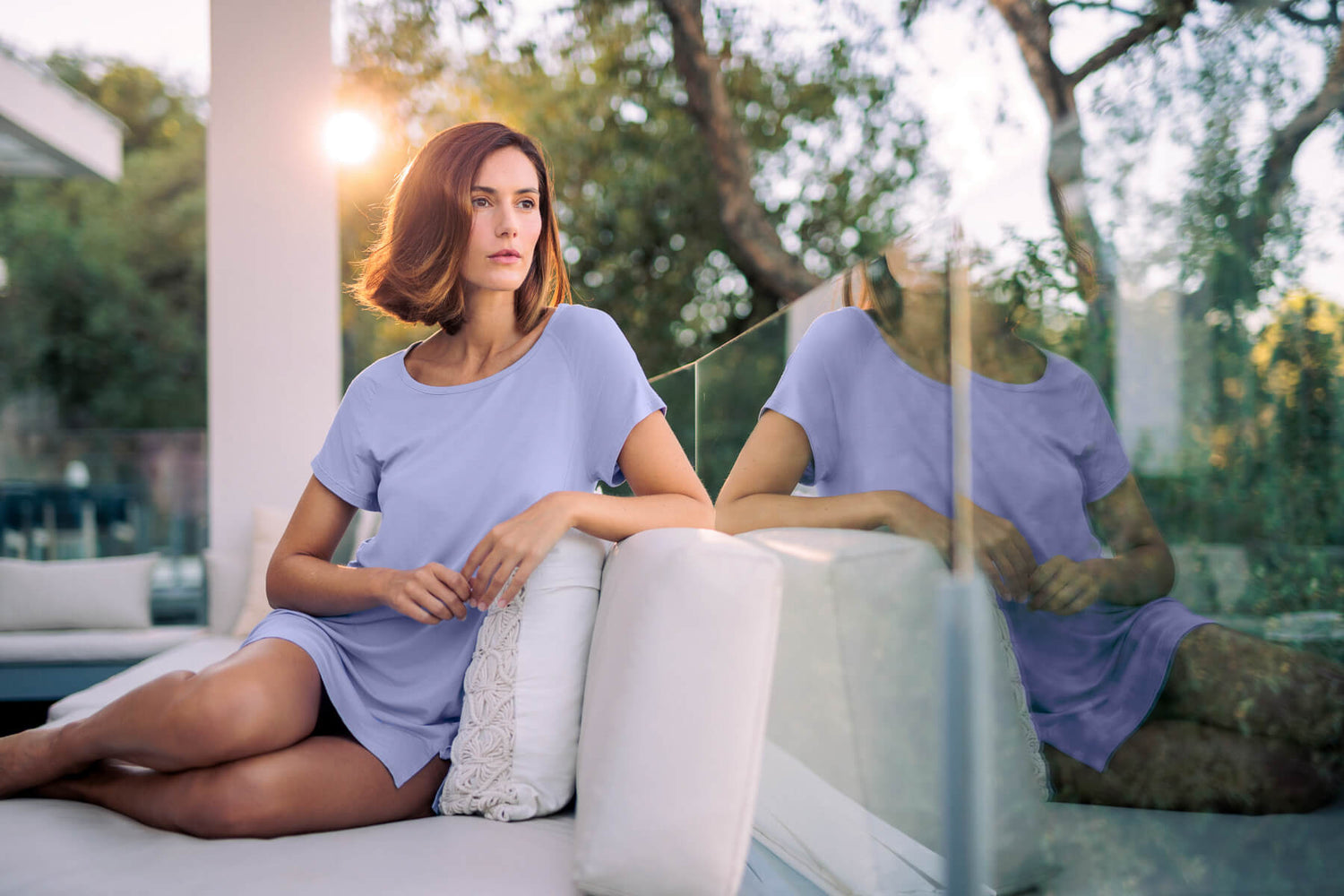Sleep and menopause
Hot flashes at night
75-85% of menopausal women experience hot flashes, which can last from 1-5 years. Hot flashes can impact our sleep quality negatively, but there are actions you can take to sleep better.
What are hot flashes? | How do hot flashes at night impact my sleep? | How can I alleviate hot flashes? | What is the best nightwear for hot flashes?
What are hot flashes?
Hot flashes normally start in the area around the face and spread to the chest, lasting around 3 minutes. Dr Rebecca Robins, (PhD, researcher Harvard Medical School) explains:
”Hot flashes, or unexpected feelings of heat all over the body accompanied by sweating, are caused by changing and decreasing levels of estrogen. They begin around the face and spread to the chest, affected approximately 75% of women around menopause years. Prior to a hot flash, body temperature rises, accompanied by an awakening which disrupts sleep, reduces sleep quality, and can result in next day sleepiness.”
How do hot flashes at night impact my sleep?
Dr Robbins highlights the importance of temperature for a good night's sleep: ”A warm room being good for sleep is actually a myth, although believed by many. A cool temperature is absolutely essential for sleep, as a low core body temperature is associated with shorter sleep onset, but also, a warmer environment causes more sleep fragmentation and nightmares." Hot flashes impact our sleep on 2 levels:
1. The temperature fluctuation can wake us up or lead to a more restless sleep.
2. Our sleep quality is reduced as we spend less time in the important deep sleep phases. For a really restorative sleep we need to keep the ideal sleeping temperature. Getting hot and cold at night is a real sleep killer.

The ideal sleeping temperature
How can I alleviate hot flashes
There are however a number of actions we can take to combat hot flashes during menopause and sleep better.
1. A cool room to sleep in: lower ambient temperature not only helps us to feel cooler, but it also supports a better sleep quality. Breathing in cool air helps to lower our core body temperature which helps us to fall asleep and to stay asleep. Dr Robbins recommends: "Therefore, and particularly for women experiencing hot flashes during the menopausal period, it is recommended to keep the bedroom around 18 °C/ 64 °F , use a fan if you do tend to overheat, and ensure your menopause sleepwear is light and breathable.”
2. Have a cooling aid: if you have a glass of ice water next to your bed and a wet cloth you can quickly cool yourself down in case of hot flashes at night.
3. Menopause pajamas for hot flashes: most nightwear is not designed for our physiological sleep needs are not apt at meeting our particular needs when impacted by hot flashes. Natural fabrics often get soaked and then become wet and uncomfortable. Synthetic fabrics trap in the heat and the sweat and we overheat even more.
Menopause night sweats
Best nightwear for hot flashes
A moisture wicking pajama that is highly breathable can make a real difference. It's also important that our sleepwear works with evaporative cooling to not only wick away the moisture, but also to cool us down.
Dagsmejan menopause sleepwear is ideal to help you moderate the impact of hot flashes and sleep deeper and longer. With the finest natural fibres and the latest sleep technology, Dagsmejan is scientifically proven to keep you longer in the ideal climatic comfort zone. Find out why Dagsmejan has been called the best menopause pajamas for hot flashes.




